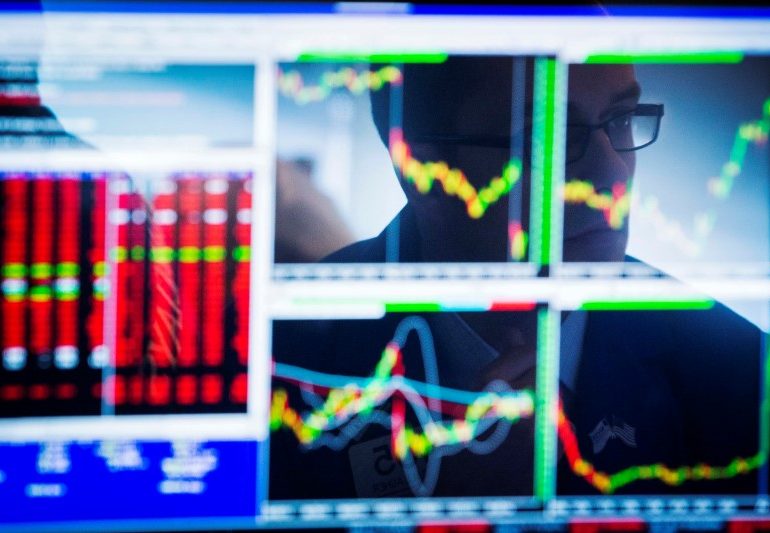 © Reuters. FILE PHOTO: People are seen on Wall Street outside the New York Stock Exchange (NYSE) in New York City, U.S., March 19, 2021. REUTERS/Brendan McDermid/File Photo
© Reuters. FILE PHOTO: People are seen on Wall Street outside the New York Stock Exchange (NYSE) in New York City, U.S., March 19, 2021. REUTERS/Brendan McDermid/File PhotoBy Devik Jain and Shreyashi Sanyal
(Reuters) – Wall Street’s main indexes eased on Wednesday, with the retreating from a record high, as a decline in economy-sensitive cyclical stocks outweigh an early boost from growth stocks after reassuring comments from the Federal Reserve.
More than half of the 11 major S&P 500 sectors were trading lower by early afternoon, with energy and financials leading declines.
U.S. monetary policy will offer “powerful support” to the economy “until the recovery is complete,” Fed Chair Jerome Powell said on Wednesday in remarks that portrayed a recent jump in inflation as temporary and focused on the need for continued job gains.
“Markets have been in a bit of a tug of war between concerns about high inflation and concerns about pulling back of monetary policy,” said Randy Frederick, vice president of trading and derivatives at Charles Schwab (NYSE:).
“And as Powell continues to say he’s not going to hike rates, then the market continues to perform well.”
Data on Wednesday showed U.S. producer prices increased more than expected in June, a day after a reading showed U.S. consumer prices rose by the most in 13 years last month.
Trading on Wall Street has been dictated by rising inflation in the past few weeks, with investors fearing that the double whammy from a possible hawkish shift by the Federal Reserve and a spike in coronavirus infections could knock U.S. equities off record highs.
Growth stocks including Apple Inc, Microsoft Corp (NASDAQ:) and Amazon.com Inc (NASDAQ:) rose between 0.2% and 2.2%, leading gains. Also boosting Apple shares (NASDAQ:) was a report that the iPhone maker is planning a ‘buy now, pay later’ service. [nL4N2OP3RO]
JPMorgan Chase & Co (NYSE:) and Goldman Sachs Group Inc (NYSE:) reported blowout earnings on Tuesday, starting off the second quarter reporting season on a high note.
Bank of America Corp (NYSE:), Wells Fargo (NYSE:) and Citigroup Inc (NYSE:) also beat profit estimates. Wells Fargo and Citi rose, but BofA fell 3.8% as its mainstay lending business took a hit from low interest rates.
The S&P 500 banks index fell 1.2% for the second straight day after gaining steadily till the start of the earnings season.
American Airlines (NASDAQ:) jumped 2.9% after it forecast positive cash flow.
Analysts expect 66% profit growth for S&P 500 companies in the second quarter, compared to a 30.6% decline during the second quarter of 2020, according to IBES estimate data from Refinitiv.
“Second-quarter earnings season will be very much like the first quarter, in that expectations will meet or exceed street forecast for the most part,” said Eric Marshall, portfolio manager & head of research at Hodges Capital Management in Dallas.
At 12:07 p.m. ET, the was up 16.20 points, or 0.05%, at 34,904.99, the S&P 500 was up 4.31 points, or 0.10%, at 4,373.52 and the was down 1.13 points, or 0.01%, at 14,676.52.
Graphic: SPX & CPI: https://fingfx.thomsonreuters.com/gfx/mkt/dgkplromopb/cpi%20and%20spx.png
Declining issues outnumbered advancers for a 1.32-to-1 ratio on the NYSE and for a 1.87-to-1 ratio on the Nasdaq. The S&P index recorded 32 new 52-week highs and one new low, while the Nasdaq recorded 42 new highs and 94 new lows.

